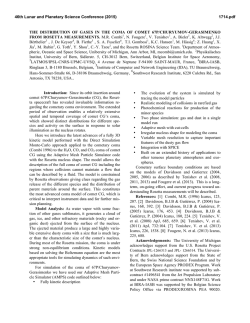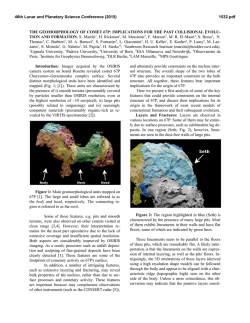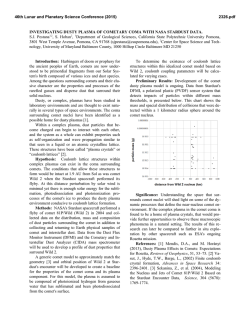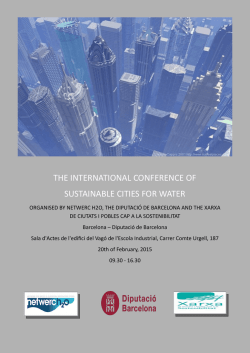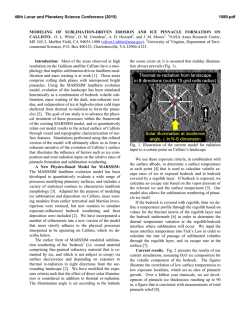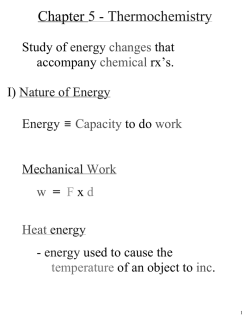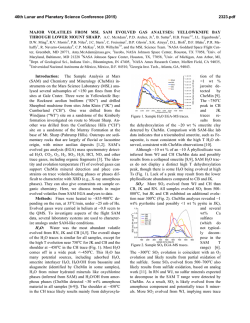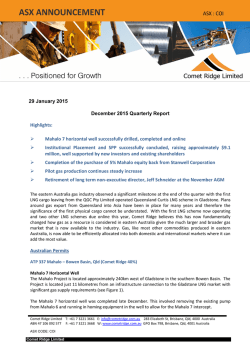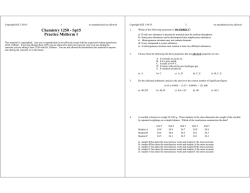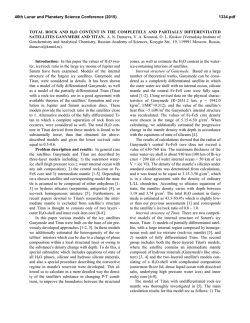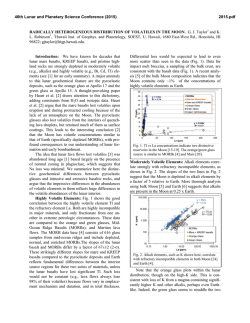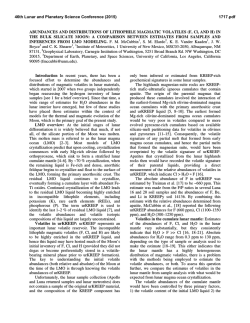
2947
46th Lunar and Planetary Science Conference (2015) 2947.pdf SUBSURFACE TEMPERATURE OF COMET 67P/C-G FROM ROSINA/DFMS? A. Luspay-Kuti1, M. Hässig1,2, S. A. Fuselier1, H. Balsiger2, U. Calmonte2, S. Gasc2, A. Jäckel2, L. LeRoy2, M. Rubin2, T. Semon2, C. Tzou2, J. J. Berthelier3, J. De Keyser4, B. Fiethe5, U. Mall6, H. Rème7, A. Bieler2,8, M. Combi8, T. Gombosi8, O. Mousis9, K. E. Mandt1. 1Space Science and Engineering Division, Southwest Research Institute (6220 Culebra Rd., San Antonio, TX 78238; [email protected]), 2Physikalisches Institut, University of Bern (Sidlerstr. 5, CH-3012 Bern, Switzerland), 3LATMOS (4 Avenue de Neptune F-94100 SAINT-MAUR, France), 4Space Physics Division, BIRA-IASB (Ringlaan 3, B-1180 Brussels, Belgium), 5Institute of Computer and Network Engineering (IDA), TU Braunschweig (Hans-Sommer-Straße 66, D-38106 Braunschweig, Germany), 6Max-Planck-Institut für Sonnensystemforschung, (Max-Planckstrasse 2, 37191 Katlenburg-Lindau, Germany), 7Université de Toulouse; UPS-OMP; IRAP (9 Avenue du colonel Roche, BP 44346, F-31028 Toulouse cedex 4, France), 8University of Michigan (Space Research Building, 2455 Hayward Street, Ann Arbor, MI 48109, USA), 9Université de Franche-Comté, Institut UTINAM, CNRS/INSU (UMR 6213, Observatoire des Sciences de l’Univers de Besancon, France) Introduction: Cometary nuclei are believed to signals well above background were obtained for the closely reflect the composition of planetesimals in the following species: H2O, CO2, CO, HCN, CH4, C2H4, solar nebula. They carry important information about and C2H3 (likely a fragment of C2Hy). The temperathe prevalent conditions in the protoplanetary disk beture-dependent latent heat of sublimation of each spefore and during planet formation. The detailed compocies, along with their sublimation temperatures are sition of cometary nuclei is therefore one of the most calculated via the Clausius Clapeyron equation [3] for important yet still unknown aspects in the understanda pressure range of 10-10 to 10-6 Pa. ing the formation of the Solar System. Results and Discussion: Figure 1 shows the relaThe recent arrival of the Rosetta spacecraft at tive intensity profiles as a function of time for various comet 67P/Churyumov-Gerasimenko (67P) provides coma molecules observed by ROSINA/DFMS, along an unmatched opportunity to study this Jupiter-family with the view of the comet by the spacecraft for the comet in extreme detail. This opportunity includes times of maxima. All species trend together through understanding the composition, evolution, and possibly the first peak at 13:30 UT. The species in this peak origin of comets. Rosetta has shown that the shape of likely originate from the neck region (Fig. 2). There is the nucleus of 67P is complex, resembling that of a a second peak in the CO, C2H3 and CO2 profiles at rubber duck, with a smaller and a larger lobe connect17:40 UT (bold dashed line in Fig. 1) that is not reed by a narrower neck. Measurements of the major flected in the H2O or HCN profiles. This peak shows outgassing species H2O, CO2 and CO revealed a that the compositional heterogeneity of the coma [1] is strongly heterogeneous coma, with large diurnal varianot limited to H2O, CO and CO2. Here, we divide volations, and possible indications of seasonal effects [1]. tiles into two groups based on their intensity profile Though volatile abundances relative to H2O in the nuover the entire time interval in Figure 1. The first cleus are not directly reflected to observed abundances group trends with H2O and the second group trends in the coma [e.g. 2], measurements of the coma could with CO2. The peak in the CO2 profile and the deep reveal various structural and physical characteristics of minimum in H2O occur when the neck region is effecthe nucleus. tively blocked from Rosetta’s view by the bigger lobe In this study, measurements of coma volatiles are [1] (Fig. 2). Hence, the source region of the species in employed to try to infer shallow subsurface nucleus group 2 at the time of the 1st peak is in the warmer temperatures of the poorly illuminated, southern winter neck region. Though, the 2nd peak most likely origihemisphere of comet 67P. nates somewhere from the southern, poorly illuminated Method: ROSINA/DFMS (Rosetta Orbiter Specwinter hemisphere at the bottom of the bigger lobe trometer for Ion and Neutral Analysis/Double Focus(Fig. 2). The sublimation temperatures of group 2 (CO, ing Mass Spectrometer) measurements obtained on CO2, C2Hy hydrocarbons) volatiles are clearly below September 18 are used for the analysis. These measthat of group 1 (H2O and HCN) volatiles. This is indicurements cover the southern, poorly illuminated latiative of hemispheric differences in outgassing, and tudes of 67P down to ~50° S. Heterogeneity of the temperature variations in the comet. H2O and HCN coma has been demonstrated for the same time period sublimation is nearly minimal at the time of the 2nd [1], allowing for the study of possible correlations bepeak (Fig. 1; bold dashed line), which suggests that tween the major and minor outgassing molecules. Relnear-surface temperatures are sufficient to sublimate ative concentrations of volatile species are derived CO2, but too low to sublimate HCN and H2O (blue from spectral fits to mass peaks from horizontal line in Fig. 1). If this were indeed the case, ROSINA/DFMS. For the time period of interest, clear then group 2 ices would be stratified in the nucleus 46th Lunar and Planetary Science Conference (2015) 2947.pdf according to volatility. The temperature at the bottom of the sublimating layer is higher than the sublimation temperature of CO (Fig. 2). Figure 2. Possible temperature boundaries and layered structure of the southern-hemisphere nucleus inferred from the time-variability of coma volatiles. Figure 1. Profiles of volatile species in the coma on September 18. Maxima and minima are marked by vertical lines. The blue line marks the sublimation threshold in the nearsubsurface of the southern, winter hemisphere. Shape model credit: ESA/Rosetta/MPS for OSIRIS TEAM MPS/UPD/LAM/IAA/SSO/INTA/UPM/DASP/IDA. Based on the preliminary results, the intensity profile of CH4 (T(CO) < T(CH4) < T(C2Hy)) does not seem to fit the above picture. Sublimation of pure ices from successively deeper crystalline ice layers suggests that CH4 should follow the group 2 volatiles. Instead, CH4 trends with group 1 volatiles over the time period examined. Possible explanations include compositional heterogeneities within the nucleus. The compositional differences in the 3rd peak in Fig. 1 at 20:40 UT may indicate also such heterogeneity. In particular, the lack of maxima of group 2 molecules despite the sublimation of the least volatile component (H2O) may suggest that each peak in the signal reflects outgassing from different source regions. Another possible explanation of the CH4 discrepancy may be that the nucleus is composed of a mixture of clathrate hydrates and pure volatile condensates [4-6]. Conclusions: Diurnal variations of various volatile species detected in the coma of 67P may provide a way to estimate the winter-hemisphere subsurface temperatures of 67P. Preliminary results suggest that a signifi- cant temperature difference may be present between the topmost subsurface layers of the two hemispheres. Furthermore, these measurements indicate a notable temperature drop between the surface and the uppermost sublimating layer.in the winter hemisphere. Such results are in agreement with observations by the Microwave Instrument for the Rosetta Orbiter (MIRO) [7]. The time variation of volatiles in the coma of 67P may bear implications for compositional heterogeneity within the nucleus. Analysis of additional observations is required to conclude with confidence on the underlying cause of the heterogeneity of the coma signal. Such an attempt is currently underway, and may provide important clues about the composition and evolution of 67P. References: [1] Hässig M. et al. (2014) Science In Revision. [2] Huebner W. F. and Benkhoff, J. (1999) Space Sci. Rev. 90, 117. [3] Huebner W. F. et al. (2006) ISSI Report. [4] Mousis O. et al. (2012) ApJL 757, 146. [5] Mousis O. et al. (2010) Faraday Discussions 147, 509. [6] Marboeuf U. et al. (2010) ApJL 708, 812-816. [7] Gulkis S. et al. (2015) Science, in press.
© Copyright 2025
